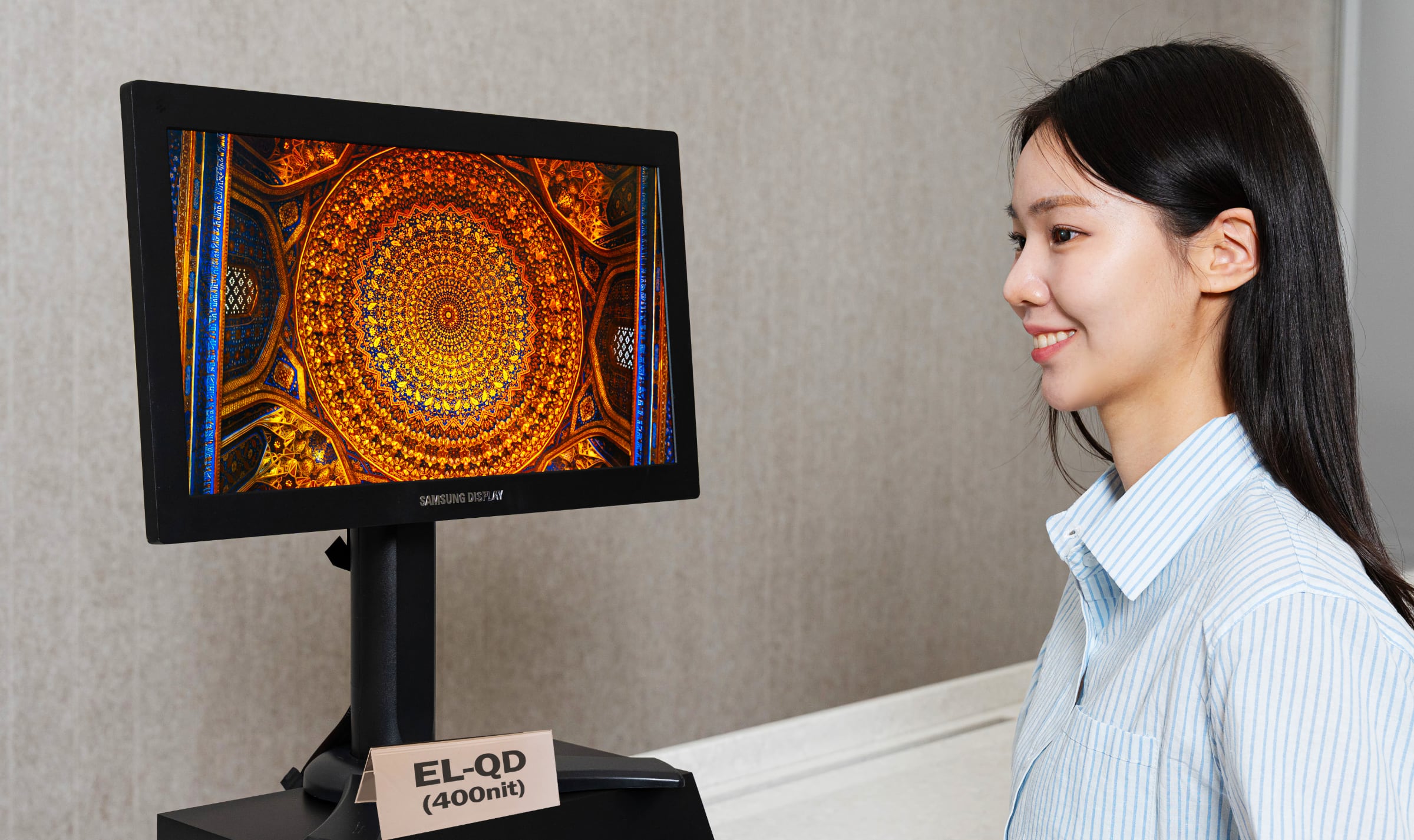- Inkjet-printed OLEDs are very close to mass production
- Samsung Display seems may have solved EL-QD’s longevity problem
- Don’t pause your new-TV plans if you’re currently shopping
The race to find the next big thing in TV tech just passed two big milestones: TCL CSOT – TCL’s display-making subsidiary – has demonstrated its inkjet-printed OLED tech at a TV size with panels up to 65 inches, and Samsung Display has demonstrated the potentially OLED-beating EL-QD in a new and brighter version.
IJP OLED and EL-QD are vying to be the next tech that replaces current OLED production, and both are self-emissive technologies like current OLED.
Both are very exciting, but neither’s coming to your front room any time soon – and of the two, printed OLEDs are likely to arrive long before EL-QD. But they could both prove to be revolutionary.
Why we’re a bit excited about printed OLED and EL-QD
Inkjet-printed OLED panels are the most immediately exciting, because they can be used in a wide range of applications: phones, tablets, laptops, PC monitors, TVs, car dashboards… pretty much anywhere you might want to put a display.
TCL has showed inket-printed 65-inch panels before: an early prototype in 2021, and a curved prototype in 2023. But this one is much closer to production than before, and some of the smaller panels TCL showed off included a new oxide backplane that apparently delivers faster response times and lower power consumption.
Although TCL CSOT says that it has become “the first manufacturer to commercialise a complete family bucket of IJP [inkjet printed] OLED products”, we’re not pausing our new-TV plans just yet: any new panel technology starts off eye-wateringly expensive until yields improve and costs come down.
IJP OLED is still very much an OLED tech in that it uses organic material to create self-emissive pixels, but structure of the panel is totally different because of the manufacturing process, so it’s very much a next-gen OLED rather than just tweaking the current tech.
It has the potential to be more power efficient and cheaper long-term – but it’s not quite ready to go.
TCL has told TechRadar directly that it will likely be several years before IJP OLED will be affordable in TVs – but it’s landing in smaller screens already.

Is the future bright for EL-QD?
EL-QD sounds like it should be the name of a bullfighter, and Samsung Display is bullish about its prospects: it uses quantum dots as light-emitting diodes and could deliver wider color gamuts, faster response times and lower power consumption than other display technologies.
Like TCL CSOT, Samsung Display was showing off its tech at the SID show in the USA. It brought some printed OLEDs and some bendable ones, but the most technically interesting was EL-QD because Samsung seems to have solved that tech’s biggest problem.
So far, EL-QD displays have suffered from a lack of longevity: early versions used cadmium, and that’s banned in many countries; without it, the longevity of the blue materials essential to EL-QD wasn’t great. But Samsung Display says it has “dramatically increased” the lifespan with its latest cadmium-free prototypes.
That enabled Samsung to make the brightest EL-QD prototype to date, but it still falls far short of the brightness you’d want in your front room: the latest EL-QD panel has 400 nits; many of the best OLEDs deliver over 1,000 nits while my mini-LED TV appears to put out ninety billion nits.
It’s also quite a bit smaller than your TV: 18.2 inches with 3,200 x 1,800 pixels.
EL-QD is a long way from production, then – assuming it ever makes it into mass production at all. The future’s bright, but it needs to get a lot brighter before it can be an HDR TV.













Leave a comment